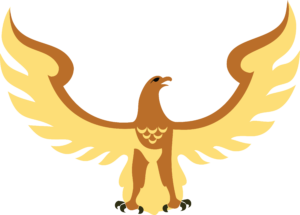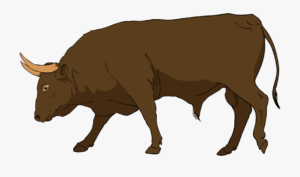Who are the four evangelists (those who wrote the gospels)? Although the gospels are anonymous, there is strong early evidence that the traditional attributions are correct. In this podcast (23 mins) we will cover these men in the order in which their gospels were written (according to the majority of NT scholars). Note: The four gospels have traditionally been associated with an eagle, man, ox, and lion.
Click on the arrow to play the podcast, or you can use the "download" icon to download the podcast (if available). You can also right click here, in order to save the audio file and listen later.
John Mark
-
- Identity
- Mark may not be John Mark. John was a common name in the Jewish world, and Mark a common name in the Roman world. And having a Greco-Roman name along with a Semitic name was not uncommon.
- Even if John Mark is not the writer of Mark, you can still derive some benefit from our study.
- Some identify him with the young man who fled naked (Mark 14:52), but this is unsure.
- He is associated with Peter, according to Papias (early 2nd C.).
- Acts 12:12
- Mid-40s AD
- Peter returns to John Mark’s house once released from prison.
- Prayer meeting. [Listen also to the Rhoda NT Character podcast]
- John Mark's family were people of means.
- Acts 12:25
- He is a missionary.
- And connected with Saul and (esp.) Barnabas.
- Acts 15:36-41
- 49 AD.
- Paul felt young John Mark should not join them. Too much pressure? Untested or fragile? In some other unreliable? Not a good chemistry between Saul and John Mark?
- The brothers and sisters support Saul/Paul. This must have been hard for Barnabas, who had believed in Saul when no one else did—and for John Mark, too.
- Barnabas chooses to remain with Mark.
- Cyprus is the ancestral home of Barnabas. Jews had been scattered all over the broader Mediterranean world.
- Col 4:10
- c.60 AD.
- Mark was Barnabas’ cousin.
- Mark has reconnected with Paul, more than a decade after the time of Acts 15. People change in 10 years.
- Philemon 24
- Mark is numbered among other colleagues of Paul.
- He sends greetings to those in the Lycus Valley. He knew many people around the world, e.g. in Cyprus, Syria, and quite likely Egypt.
- 2 Tim 4:9-11
- 64-68 AD
- Not only have Saul and John Mark reconnected, but now the apostle appears to be fond of Mark.
- Note: As Paul was executed under Nero, who died in 68 AD, and most scholars date the composition of Mark to around the year 65, it is just possible that Paul had already read Mark.
- Paul appreciates Mark’s help, and he praises him.
- Further:
- Although Mark, like all four gospels, is anonymous, there is an early and strong tradition that Mark was the author. (See Papias.)
- Mark was close to Peter. Mark could be “The Gospel of Peter” (except that’s an apocryphal document from the late 2nd).
- Peter felt comfortable with Mark recording all his weaknesses.
- Mark was a leading figure in Egypt.
- Alexandria: Although missionary work there is not mentioned, it is unthinkable that the apostles would have skipped Egypt!
- The best candidate is Mark—not only because the Egyptians today insist so loudly that he is the founder of Egyptian Christianity, but because there are, as far as I know, no further claimants to the title.
- Mark was a great man, and his name is still highly popular (although I know of only one John Mark).
- The combination of writing and missionary experience is a good one.
- This is no armchair academic! The same can be said of Matthew (one of the 12), Luke (traveled with Paul), and John (an apostle).
- Identity
Matthew (Levi) – covered in another talk, so let's be brief…
-
- Matthew is mentioned in Matthew 9:9 and 10:3, and comes from Capernaum.
- His other name is Levi, son of Alpheus (Mark 2:14; Luke 5:27).
- Matthew collected taxes for Herod Antipas, tetrarch of Galilee. He may have been despised as a collaborator, but his willingness to follow Christ shows his heart was good.
- As a tax collector he would have been literate in both Aramaic and Greek, in addition to being good with numbers. We actually know more about Zacchaeus (Luke 19), another tax collector in the first century, than about Matthew.
- According to early tradition, Matthew died in Parthia, where he had ministered.
- His gospel was the most quoted among the earlier church fathers, just as people are still naming their baby boys after him worldwide.
- For more, check out Q&A 1551: Whatever Happened to the Apostles (after N.T. times)?
Luke
-
- Identity
- Doctor
- Only Gentile writer of the NT
- Wrote ¼ of the NT.
- Accompanied Paul—look for the “we passages” in Acts.
- He is mentioned three times in the NT, all three times in epistles penned by Paul in the 60s AD.
- Col 414
- This is the sole verse where we learn that Luke is a doctor.
- He was no street hawker, no quack. (If he lacked credentials or ability, it is doubtful attention would be drawn to his shabby vocation.)
- His polished Greek attests to a high level of his education.
- Philemon 24
- 2 Tim 411—accompanies Paul in his final days before execution.
- Thoughts
- The message of Christ attracted not only the disenfranchised and the educated, but also professionals and even the well-off. (But see 1 Cor 1:26.)
- There is a parallel in the lives of the two most influential apostles. Just as Mark accompanied Peter, Luke accompanied Paul. As Mark’s gospel reflects Peter’s life and character, so Luke’s 2-volume work provides us with an abundance of information about Paul, to which we would not otherwise have access.
- Like Matthew, Mark, and John, his name is highly popular.
- Matthew – from the Hebrew
- Mark is a Gentile name, but John is Hebrew
- Luke is a Gentile name, from the Latin Lucius.
- By tradition, Luke was martyred in the reign of Nero.
- Nero orders his hand and arm to be cut off—which Luke miraculously reattaches! Then he is taken out to sea and beheaded, body and head placed into a bag and cast into the sea. His remains wash up on an unnamed island.
- His remains are moved to Constantinople in the 350s, later taken to Padua (Italy). In 1354 Holy Roman Emperor Charles IV removed his head from the reliquary and takes it to Prague. Luke's head and hand are placed on display in Rome in the 17th century. It was not uncommon for relics from a single body to show up in multiple cities.
- Source: Syriac / Coptic scholar Jacob Lollar, 2020.
- Identity
John – covered in another talk, so there’s no need to repeat the material here.
-
- John—Jerusalem, Judea, Samaria, Ephesus, Patmos.
- Probably buried in Ephesus.
- Further study: Q&A 1551: Whatever Happened to the Apostles (after N.T. times)? Also consider the N.T. Character Podcast on John (login required—but not if you listen to my podcast—sign up wherever you get your podcasts).












